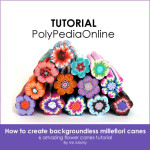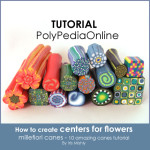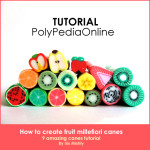Polymer Clay Basic Safety Suggestions
Home Page › Polymer clay safety tips
Here are some polymer clay safety tips
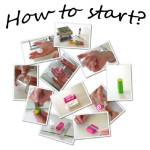 ► Polymer clay is a synthetic substance, it is considered non toxic but be careful that a child or a pet doesn’t swallow it.
► Polymer clay is a synthetic substance, it is considered non toxic but be careful that a child or a pet doesn’t swallow it.
► Don’t eat while you are working with clay, not only you will get food crumbs on your project, but you might eat small amounts of clay as well.
► Tools that are used for polymer clay should be used just for polymer clay and not for food. Dedicate your pasta machine or cutters and food processor just for your art.
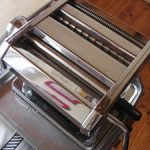 ► Handle hot objects with caution. Since baking is involved, your polymer clay creations will be hot when they are out of the oven.
► Handle hot objects with caution. Since baking is involved, your polymer clay creations will be hot when they are out of the oven.
► Be careful with sharp objects. Knives, scalpels, and blades used for slicing, cutting, and carving polymer clay are required to be sharp, so handle them with due respect. Blades are especially dangerous, since it is difficult to tell their sharp and dull sides apart. Mark the safe side of your blades with fingernail polish or marker. Also, if you use wire in your polymer clay work, be caution about tiny pieces of wire may jump when you cut them, point your wire away from anything around you or use your hand to “cone” and protect those bits to “fly”.
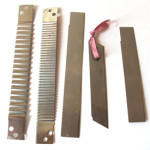 ► Always work on a sheet of glass or ceramic tile, for the safety of your furniture. The plasticizer in unfired clay can be harmful to wood finishes, and it eats into some kinds of plastic. If you need to set clay down on a table or a surface other than your work surface, wrap it in waxed paper first to keep it away from the finish. Fired clay is neutral and can be put anywhere.
► Always work on a sheet of glass or ceramic tile, for the safety of your furniture. The plasticizer in unfired clay can be harmful to wood finishes, and it eats into some kinds of plastic. If you need to set clay down on a table or a surface other than your work surface, wrap it in waxed paper first to keep it away from the finish. Fired clay is neutral and can be put anywhere.
► The clay is safe to touch, but clean your hands thoroughly after you work with the clay and before you eat or cook. Polymer clay get off your hands using soap and water. You can keep a towel or a package of wet wipes near your workspace, to remove it when you want to switch between colors of clay.
► I’ve read that birds are reported extra-sensitive to polymer clay fumes, so if you have a bird, it may be safer to put either bird or oven outside while you’re baking.
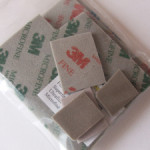 ► The rules for safety while sanding or buffing clay are similar to the rules for sanding wood or other materials. If you’re dry-sanding (instead of sanding under water) or drilling a clay piece, use a face mask to avoid inhaling the tiny clay particles coming off the sandpaper. You should also use a face mask when working with aluminum-based metallic powders, since these fly everywhere and can cause damage if they’re breathed into your lungs.
► The rules for safety while sanding or buffing clay are similar to the rules for sanding wood or other materials. If you’re dry-sanding (instead of sanding under water) or drilling a clay piece, use a face mask to avoid inhaling the tiny clay particles coming off the sandpaper. You should also use a face mask when working with aluminum-based metallic powders, since these fly everywhere and can cause damage if they’re breathed into your lungs.
► Always use eye protection when using any power tool with the clay, whether for drilling, buffing, or sanding. It’s very easy for a bead you’re buffing to get loose and go flying, possibly into your face. Even the tiny clay particles can get into your eye and cause injury. You can buy plastic safety goggles at any hardware store.
► Polymer clay and kids – safe? Yes, as long as the kids are old enough not to try eating the clay. Also, children too young to use an oven safely will require supervision during curing. Same goes to blades of course. Soft clays such as Sculpey are easier to handle and may be more satisfying for younger kids than the stiffer clays; try making marbled beads or simple canes.
Click here to learn “How to condition Polymer Clay“


